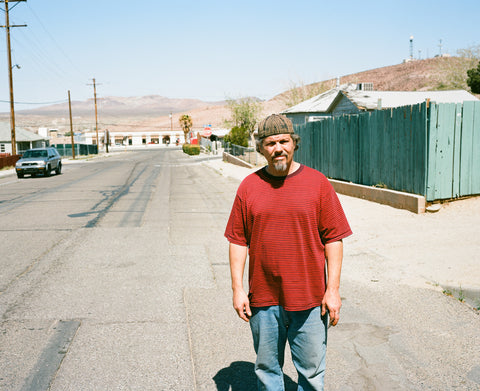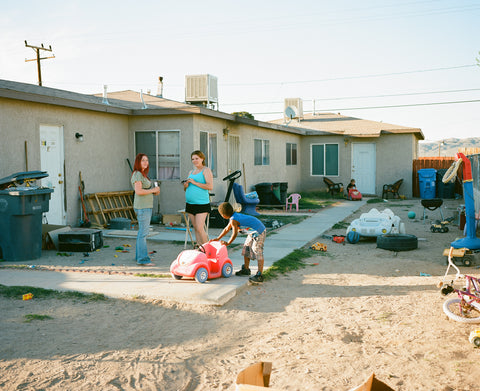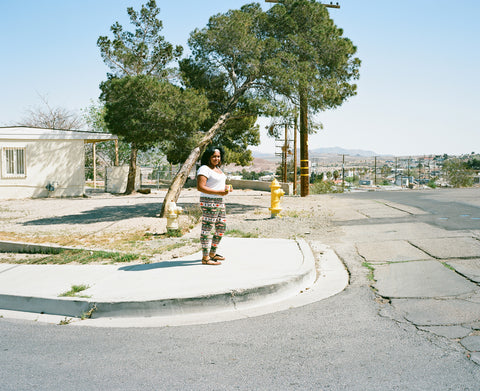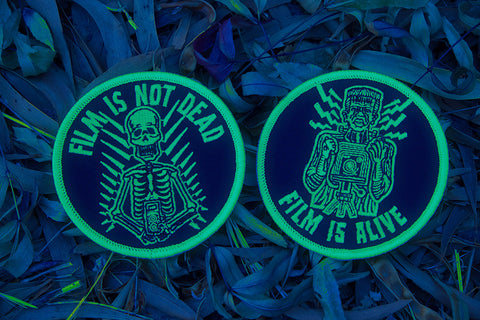SEE THE UPDATED 2018 VERSION OF THIS ARTICLE HERE!
Okay, so maybe "ultimate" might be a bit of hyperbole. The fact is, this list is still growing and constantly evolving, so bookmark it and keep checking back. And some of the fine companies listed have been nice enough to offer my readers coupon codes, so be sure to take advantage of those discounts!
Gift giving seems to be a double-edged sword. On the one hand, it feels good to give a loved one something they need, want, and appreciate. On the other hand, one can potentially give a gift that the recipient simply doesn't like. I'm here to try to help you, the gift giver, with a guide that looks into what photographers, and more specifically, photographers who shoot with film, might be hoping to get as a gift.
To begin my research, I did an informal poll of several active Facebook groups that deal with film photography. I started by asking the groups what they want in a gift. The items listed here are simply the most popular answers, along with a price range and a description of the gift. I've sorted the items from least to most expensive, in hopes to help those of us on a budget. All prices are USD. Let's get started!
FILM, FILM, AND MORE FILM
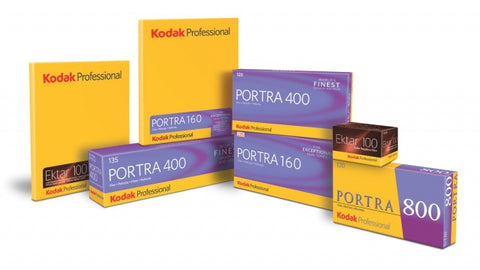
Price range: $4.00 to $9.00 (per roll)
Here's the biggest no-brainer on the list, and the least expensive, too: Film! While there are many, many different types of film, let's take a look at the most popular variations that you can't go wrong with.
For those who shoot high volume, general scenes, and don't mind the "cheap" stuff: Kodak Gold 200, Kodak Ultramax 400, or Fujifilm Superia 400.
For those who shoot a lot outdoor scenes in bright light: Kodak Ektar 100, Fujichrome Provia 100F
For those who shoot people/portraits: Kodak Portra, Fujifilm PRO400H,
For those who shoot Black & White: Kodak Tri-X or T-Max, Ilford HP5 or Delta.
For night and long exposure photography: Fujifilm Neopan Acros or Provia 100F
Hand-rolled, experimental, and other unique films: Film Photography Project Store
TIP: Film comes in different formats/sizes. The most common ones are 35mm and 120 (known as medium format); find out which size you need to get before buying!
JAPAN CAMERA HUNTER FILM CASES

Price: Starts at $9.00
Simple and handy, these film cases hold rolls of film in a compact space. Available in 10- and 5-space versions, these inexpensive cases will be useful to most any film photographer. He even has a version filled with a "Surprise"--a case filled with various types of surprise film.
Click here to buy Japan Camera Hunter Film Cases
PATCHES, STICKERS, AND LAPEL PINS FROM SHOOT FILM CO.

Price range: $2 to $10
Okay, full disclosure: I design, create, and market these patches from this website. The film photography community has really taken to the message and they have been super popular with film shooters that want to adorn their jackets, hats, and bags with the message that film is alive and well. The stickers are made from durable vinyl outdoor usage like cars, and the patches are custom embroidered and made in the USA.
Click here to shop patches and stickers from Shoot Film Co.
ILFORD SINGLE USE BLACK & WHITE CAMERAS
Price: $10
Fun to use, readily available and easily processed, Ilford offers single use cameras loaded with 27 exposures of their HP5 or XP2 film.
Click here to buy Ilford Single Use cameras
HOYA FILTERS
Price range: $10.00 to $30.00
Filters can range from protective (clear/UV) to having special purposes, such as neutral density or color balancing. They come in different sizes so make sure to get the right size for your photographer's lenses. Hoya is a great brand that is a great balance of price and performance.
Click here to buy Hoya Filters.
CAMERA STRAPS BY DOMKE
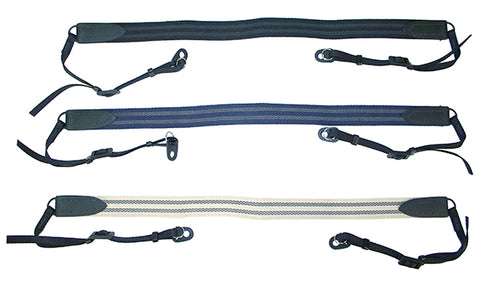
Price range: $13 to $40
Domke camera straps and bags have long been the standard bearer for photojournalists. Unpretentious, well built and inexpensive. They just work.
Click here to buy Domke Straps.
SELF PUBLISHED BLURB BOOK
Price range: $14.99 and up--but the bigger the book, the more expensive it gets.
Using Blurb, you can create, publish, and sell your own collection of works in a book. Few things are as satisfying for a photographer as seeing their work printed. This is a fun way to be able to get pictures from a negative to a printed page. They offer options for direct sales, sales through Amazon, and even eBook sales.
Check out Blurb here.
HIGH QUALITY PRECISION SCREWDRIVER SET

Price: $18.50
If you've noticed your film-shooting loved one is always buying, taking apart, and fixing old cameras, then this is the perfect inexpensive gift. Precision screwdrivers are a necessity for taking apart cameras and the many other things that need repairing and tinkering around the house. Many sets can be had for only a few dollars, but those are usually of low quality and break or wear down quickly. This set is of high quality and sure to last much longer than cheaper sets.
Click here to buy the precision screwdriver set
FINDING VIVIAN MAIER (DOCUMENTARY FILM)
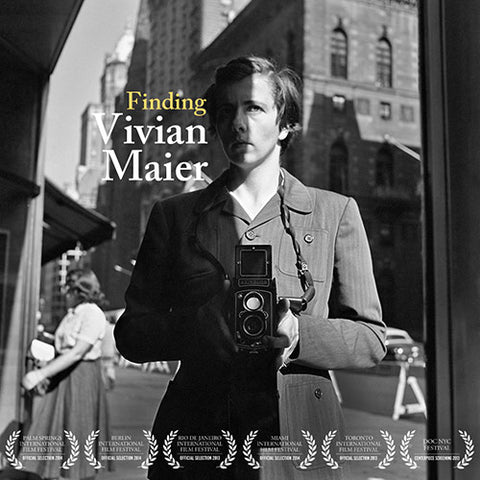
Price: $18
Vivan Maier worked as a nanny and was known to be socially reclusive. After she died, it was also discovered that she was a inexplicably talented street photographer that had thousands upon thousands of negatives discovered by people in her storage locker. Curated exhibits, books, and even a documentary have been created about her discovery and her beautiful work.
Click here to buy Finding Vivian Maier.
BOOKS, BOOKS, BOOKS!
To a photographer, (especially a film photographer), there is nothing quite like a printed photo. Seeing photos by the masters in books is one of the most satisfying and engrossing ways a photographer can spend their time. They can enjoy, learn, and get lost in the images. Here are some suggestions that come the most highly recommended by film photographers:
Magnum Contact Sheets - $50
Dennis Hopper: Photographs 1961 - 1967 - $150
Vivian Maier: Street Photographer - $24
Barstow - by Dave Hill - $30
500 Cameras - $20
Instant: The Story of Polaroid - $20
The Polaroid Book - $13
DOMKE PROTECTIVE WRAPS
Price: $20
These versatile and protective wraps can be used for lenses, cameras, tools, or anything else that needs protection. Come in a variety of sizes different colors for quick visual identification and organization. They are made from a padded velcro-compatible knit with a non-scratch nylon backing.
Click here to buy Domke Protective Wraps.
NEOPRENE LENS POUCHES
Price: $20
These lens pouches are inexpensive and help protect the multiple lenses one might have. The belt loops and clips will help you to attach the pouches anywhere you want. They can be purchased individually in different sizes, or an an economical 4-pack for only $20.
Click here to buy Neoprene Lens Pouches
FILM PROCESSING
Gift certificates starting at $25
Any film photographer will naturally need their film processed. The easiest way for you to give this is a gift is to find a lab that processes film AND sells gift certificates! One such lab is Old School Photo Lab. They accept film by mail, process it, and mail back the processed film. They can even scan for you; they upload the scanned images onto a secure website where you can download them. Especially convenient since you don't have to wait to get the negatives or CDs back to view the photographs.
Click here to buy gift certificates from Old School Photo Lab
CUB AND COMPANY ACCESSORIES

Price Range: $45 to $120; use code "shootfilm" at checkout to get 15% off your order. Expires December 31, 2015.
Beautiful, high quality artisanal straps, made from scratch, by hand, using full grain leather. They have other accessories and apparel like pins, patches, and hats too. An especially useful product are their film holsters, made by hand by founder Joel Chavez and designed to attach to a backpack strap. There is also a smaller belt version designed to hold 2 rolls, made to attach to a belt, but can also be attached to a backpack strap. The bonus here is that you're buying from and supporting the craftsman and photographer that makes these pieces!
Click here to shop Cub and Company.
FPP INFRARED ULTRA WIDE AND SLIM CAMERA GIFT BOX
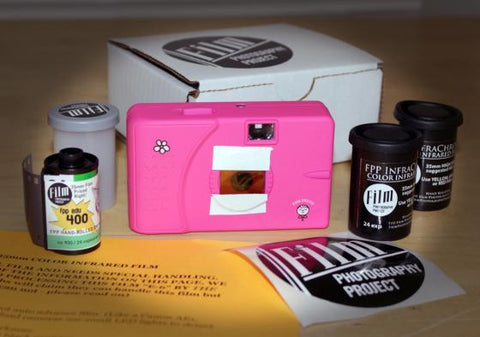
This is going to the quirkiest gift for the photographer that has everything. This cult-status camera has been modified to shoot infrared film, and packaged in the box are two rolls of color infrared and one roll of black & white infrared film. Check out the samples in the FPP shop for the unique results this combo can get.
Shop FPP Infrared Ultra Wide and Slim Camera
CAMERA BAG/CASE
Price range: $50 to $500
Here's where you're going to start getting into some deep thought/research. A camera bag can be a very personal thing for a photographer. They come in many styles, shapes, and sizes. Does the photographer like sleek and modern? Or maybe vintage and military-inspired? Messenger-bag style or backpack? There are enough options to make your head spin, but a little bit of observation on your part will go a long way into the type of camera bag they might like. Here are a few suggestions:
Domke - The longtime workhorse for journalists, Domke bags and accessories (like the straps I mentioned earlier) are of excellent quality, simply designed, and unpretentious. Function definitely precedes form in their design, though that's not to say the design is at all lacking. The Domke design aesthetic sits somewhere in between vintage and modern, and they definitely don't cry "I'm a camera bag, steal me!"
Billingham - Gorgeous, vintage styled bags designed and made in Britain. Famous for being sturdy and long lasting, these bags have a legacy dating back to the 70's and retain their quality and heritage to this day. They offer a number of different sizes but each version retains the look of a Billingham.
Filson - U.S.A.-made bags that are classic in style and have a long heritage of fine craftsmanship and quality. They have lines that are "designed" in part by famed photographers Steve McCurry and David Allan Harvey (they have pictures on the website with these photographers pointing at fabric samples!), so expect to pay a bit more to have those names attached. The bags certainly are beautiful.
Think Tank - Lots of gear to cart around from job to job, location to location? Think Tank is the preference of many professionals that have an abundance of equipment that has to be carried and moved safely. The Airport series is classically and simply styled as rolling luggage, with lots of room, compartments, and padded dividers.
HOME DEVELOPMENT SUPPLIES
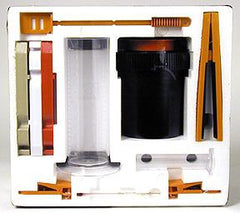
If you've got a darkroom nut on your hands that likes to develop at home, home development supplies are always handy, and always needed. Freestyle Photographic has the entire range of supplies needed to stock a darkroom, or to get a novice started on developing their own film. There are lots of pieces involved, but Freestyle Photographic Supplies has created a guide to all the essential equipment needed for a darkroom in the handy list below. All the tools and chemicals can get confusing, so a gift certificate might be in order. Freestyle Photographic offers certificates that you can order by phone.
Shop home development supplies from Freestyle Photographic
FILM FRIDGE/FREEZER
Price range: $130 and up
You've probably noticed that your film-shooting loved one has claimed a good portion of real estate in the refrigerator for something other than food--precious, precious film. That's right, film expires--it must be refrigerated, or even better, frozen to keep the emulsion from losing sensitivity and causing colors shifts. If you find yourself running out of space for food because of a freezer or refrigerator full of film, this is the gift you're looking for. These are not specialized refrigerators--they're the same kind you put your sodas and beer in when you were in college, but one you can dedicate solely for the storage of film!
Click here to shop for personal refrigerators
LUMU LIGHT METER
Price: $149
Many old film cameras don't have a light meter. Remedy that for your film shooter using a small, relatively inexpensive light meter that attaches to a smartphone. Companies like Sekonic have made standalone handheld light meters for years, but for those who like to travel light, the Lumu is a great solution since the smartphone will be pulling double duty as a light meter and most everybody will be carrying a phone anyway. TIP: make sure the smartphone being used is compatible with the Lumu!
Click here to buy a Lumu Light Meter
MiNT Instant Flex L70 Twin Lens Instant Camera

Price: $319
A twin-lens camera that uses Fujifilm Instax instant film. Stylish, and attention-getting, it looks like a classic camera. It's a new concept and it looks like a lot of fun to shoot!
Click here to buy the MiNT InstantFlex TL70
LEICA M6 + 50MM SUMMICRON
Price range: $1,600 to $2,800
We're getting up there in price range, and this item is definitely a luxury, though likely to last a lifetime. Considered one of the finest rangefinders ever, and what many believe is Leica's finest iteration of their M line of film rangefinders. Operates mechanically and still fires without batteries. While you can find bargains on auction sites such as Ebay for a price at the lower end of the spectrum, I suggest sourcing yours from Bellamy at JapanCameraHunter.com because he can find you a clean, working model that he can guarantee amongst a vast used market. You don't always know what you're getting into with an Ebay auction unless the seller is very knowledgeable and reputable, so working with a reputable dealer like Japan Camera Hunter is highly recommended for extra piece of mind. It might take him some time to source the perfect combo, so contact him early!
Click here to get in touch with Japan Camera Hunter
The following ideas can vary in price widely, and will require a bit more involved and extensive research.
PRINT FROM A FAVORITE PHOTOGRAPHER
Very few things are as important to a film photographer as the print. Many photographers don't consider a photo finished until it's printed. Thus, a print from a favorite photographer is sure to warm the heart and bring years of joy. If you already know who some favorite photographers are, then finding out if prints are available are an internet search away. You might also ask in casual conversation who some favorites are if you don't already know.
PHOTOGRAPHY CLASS/WORKSHOP
Learning from those with more experience, and learning alongside other like-minded people can be a very motivating and fulfilling experience for any artist. Photography classes and workshops are a great way to quickly advance one's knowledge and ability in a fun and challenging way. There are literally hundreds of workshops held all over the world, so you'll have to do the legwork on finding something suitable.
TRIP/ VACATION
This could be as good for you as it is for the recipient of the gift! Taking a trip to a new destination with the focus being on photography can help to rejuvenate a photographer with a change of scenery. Is there a place you've both dreamed of going? Then this can be a gift for both you! Just be prepared to stop more often when the photographer sees a beautiful scene and needs to get the tripod set up.














